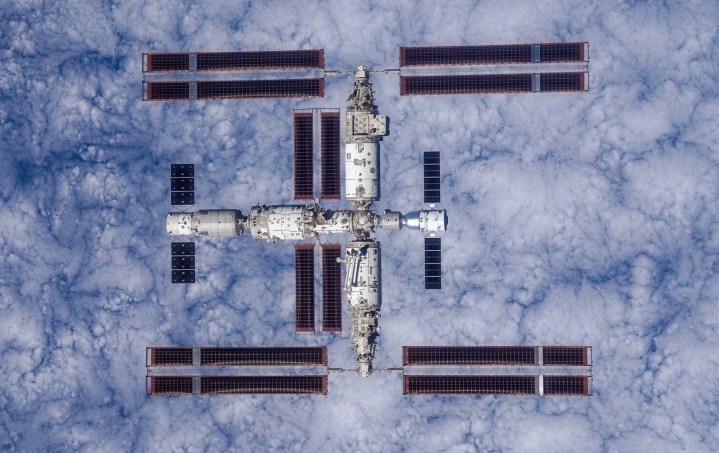
China has shared a set of images that show for the first time the entirety of its new Tiangong space station.
Released this week by the China Manned Space Agency (CMSA), the images were captured from a few hundred meters above the structure by the Shenzhou 16 crew as they left the station to return to Earth at the end of last month.

The images show the core Tianhe module at the center and two laboratory modules, Mengtian and Wentian, either side of it. Also visible are the Shenzhou 17 spacecraft and Tianzhou 6 cargo ship that are currently docked with the core module.
The numerous dark rectangles are the solar arrays that help to power the 90-ton Tiangong, which translates as “Heavenly Palace.” The structure bears a strong resemblance to the International Space Station (ISS), though the latter is considerably larger and heavier.
That could change, however, as according to the South China Morning Post, China plans to expand the Tiangong from a three-module, T-shaped facility to a six-module, cross-shaped one.

The first module of the Tiangong station was sent to space in April 2021 and since then China has conducted several additional launches to gradually build it out. It orbits at about 230 miles above Earth, slightly lower than the ISS, which is positioned around 250 miles above our planet.
And just like the astronauts and cosmonauts aboard the ISS, Chinese taikonauts staying on the Tiangong facility spend much of their time carrying out scientific research in the unique microgravity conditions.
The Tiangong is part of China’s broader space ambitions, which include a plan to land astronauts on the moon before 2030. It’s already successfully deployed a rover on Mars and brought back a sample of lunar soil from our nearest neighbor.
NASA and its partners are planning to decommission the aging ISS in 2031, and if it doesn’t have a privately funded replacement in orbit before then, China’s facility will become the only permanently crewed station in space.


